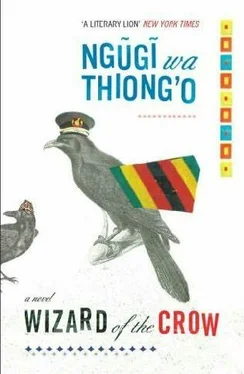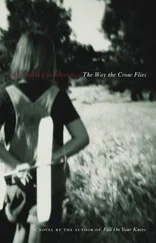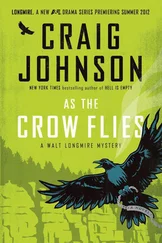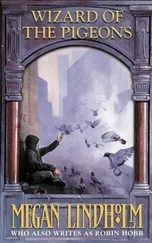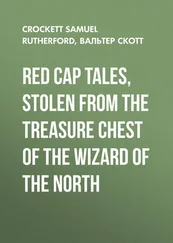“Not just the shepherds,” Nyawlra said. “The same stars led me across the prairie.”
“Did you know that our people believed that the sun is God?” Kamltl said, still gazing at the stars.
“Deities are never far from your thoughts,” Nyawlra commented.
“Shall I show you something?” Kamltl suddenly said. “You promise not to make fun of me?”
“Why should I make fun of you for showing me one more herb?” Nyawlra said, curious about the excitement in Kamltl’s voice.
Holding her hand, he took her to a cluster of sycamore trees and stopped in front of one with branches so low that they were indistinguishable from the thicket around it.
Kamltl let go of her hand, bent down, picked something up, and handed it to her. It was a wooden figure, but one with such an intense expression on the face that for a moment Nyawlra thought it alive. Then she saw that there were more, half covered by the bush.
“So you are also an artist and you never once mentioned this side of you to me?” Nyawlra asked. Did I escape from the arms of one artist only to fall into those of another? she wondered as she now picked up one sculpted figure after another.
“I started here,” Kamltl said. “When one is alone in the forest, one is forced to contemplate the universe and creation. My thoughts were mostly on African deities. I caught myself thinking: Why don’t I carve a Pan-African pantheon of the sacred? They will keep me company. My heart and body trembled, and when I set out to work it was as if an invisible hand were guiding my hands.”
“They are all truly powerful and beautiful, and they feel very much alive,” Nyawlra said. “You should be renamed Wangai. But what we now need is a little applied art. It is time I returned to confront the real and the concrete in the struggles against the dictatorship.”
“Okay tomorrow we apply applied art to you,” he said.
They stretched dried animal skins and softened them for wear, and made necklaces of sharpened wood, animal teeth, and dried berries. They made a leather skirt and matching top for Nyawlra, and really it became her so well that Kamltl himself swore he would never have recognized her in it.
“With this,” Kamltl pronounced, “Mr. and Ms. Wizard of the Crow are ready to open a business in witchcraft in Eldares.”
The name Wizard of the Crow kept cropping up during Tajirika’s ordeal in captivity: his torturers kept on asking the same question over and over again, which irritated Tajirika so much that once, despite the pain and the fear of more lashes, he shouted back at his then nameless and invisible torturers.
“What more do you want to know about the Wizard of the Crow that I have not already told you? Should I tell you that he is maker of Heaven and Earth?”
“Just tell us everything. When, where, and how you first met; what he wore that day; the exact words he uttered on the day you met, and most important, whether you ever met with him again…”
“Who? Machokali or the Wizard of the Crow?” Tajirika asked, now confused, for he had met the Wizard of the Crow only once.
Their interrogation regarding the Wizard of the Crow and even Machokali was just pretext. The torturers were after bigger fish: they wanted a word, a gesture, that would lead them to Nyawlra, the woman who had awakened women’s daemons, which in turn had awakened Rachael’s daemon, now prowling her prison plantation at night, an illumination for all who lived around to see.
Nyawlra, a woman who could raise female and male daemons at once, was dangerous, a menace to Aburlria. It was necessary to hunt her down by any means so as to comply with orders repeated by the Ruler with ever-increasing urgency and desperation and last uttered just a few minutes before he boarded the plane for the USA, a large entourage, including his official biographer with his giant pen and book, and his security team, now including Arigaigai Gathere, accompanying him: Give me Nyawlra; look for her here on earth or in the land of the spirits.
“True! Haki ya Mungu!” A.G. would pause in his narrative to swear. “I was one of the security specially chosen to accompany the Ruler to America, and I was standing close by, at the airport, and I heard him tell Sikiokuu: By the time I come back from America, I want that woman, Nyawlra, in my arms…”
BOOK THREE. Female Daemons
Come, all you who were there, and help us tell the story of what followed the Ruler’s visit to the USA. This tale needs many tongues to lighten the sense, for none of us was at once in Aburlria and America.
As to what happened in America, there are many sources from which to weave a narrative. There is, for instance, a paper written by Professor Furyk of Harvard about the Ruler’s strange illness. The paper is rich with information, but even richer is the diary the professor kept about his struggles to find a cure for the malady. Bits of truth may also be gleaned from the archives of responsible newspapers and even the fanciful tabloids. Libraries the world over, including the Library of Congress in Washington, may also prove useful for documentation. Alternatively or in addition, we may turn to the invisible global community of Internet users for postings from their local media.
Our own media, needless to say, was very thrilled with the American angle, though they may have gone overboard in describing how well the visit was going and how Americans, dying to hear about Marching to Heaven, mobbed the Ruler and his entourage. Even the delegates to the UN were quoted as eagerly awaiting the Ruler’s promised address. AMERICA is A SUPERPOWER, BUT ABURIRIA HAS THE SUPERWONDER, declared the headlines of some of the AburTrian newspapers. TV and radio followed suit. The AburTrian media, however, was hesitant in predicting the outcome of the journey because the Global Bank, like fate, would have the last word, which the Ruler was waiting to hear.
So it is only events within Aburiria where we may find it difficult to get a full picture, and for that part of the story we must rely on countless rumormongers, who at the time were abuzz with the return of the Wizard of the Crow to Santalucia and his wondrous powers of healing and divination.
There was not a single bodily ill he could not heal. Some, swearing by whatever was most sacred to them that they had witnessed with their own eyes the drama, claimed that the Wizard of the Crow could ferret any disease out no matter where it hid, all the while murmuring mockingly, “So you thought you were more cunning than the Wizard of the Crow!” The illness, sensing ignominious defeat, would flee the body of the victim, it was said. He knew so much about the healing properties of herbs, the tellers claimed, because he could turn himself into a plant and would return to human form armed with the secrets of plant life.
Kamltl may have sparked the rumors with his advice to his clients: All life is one and it flows like a river or the waters of the sea. Plants, humans, animals down to the creatures that crawl, all draw their share from the one indivisible river of life, just as they all draw breath from the air.
They had started at Nyawlra’s place, but because of the influx of so many new clients they built a much bigger shrine in the prairie a short distance from the outskirts of Santalucia. The House of Modern Witchcraft and Sorcery: this was the name they gave it. Divination was at the center of all activities at the House. Most clients believed that all diseases were rooted in sorcery and could not imagine a proper diagnosis or relief not requiring some kind of divination ritual. They wanted the magic of pure performance. Kamltl and Nyawlra adjusted their role as Wizard of the Crow to the imperatives of the occasion. Their fee was the same for the rich and the poor, set according to what Kamltl and Nyawlra thought an average working person could afford. But they were mindful never to turn people with no money away. These invariably would promise to pay when they could and always kept their word. Nyawlra never knew whether they did so out of honesty, gratitude, or simply fear of the wizard and his sorcery.
Читать дальше
